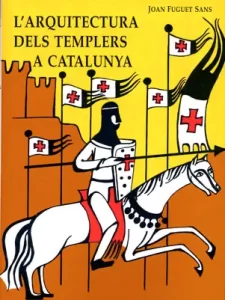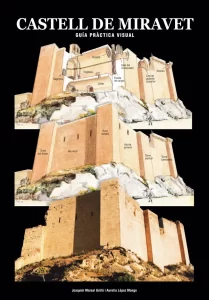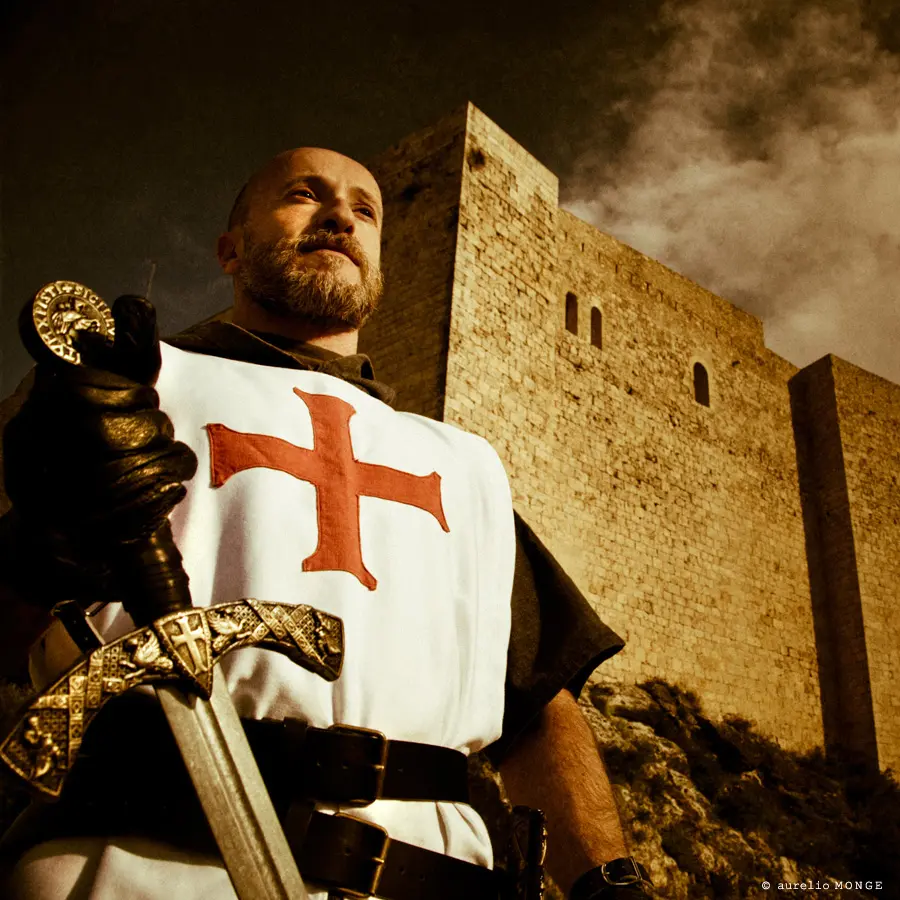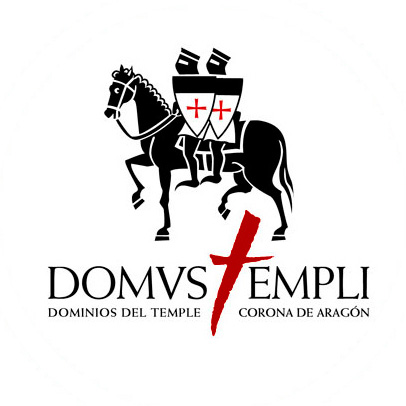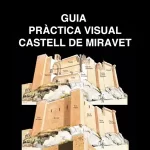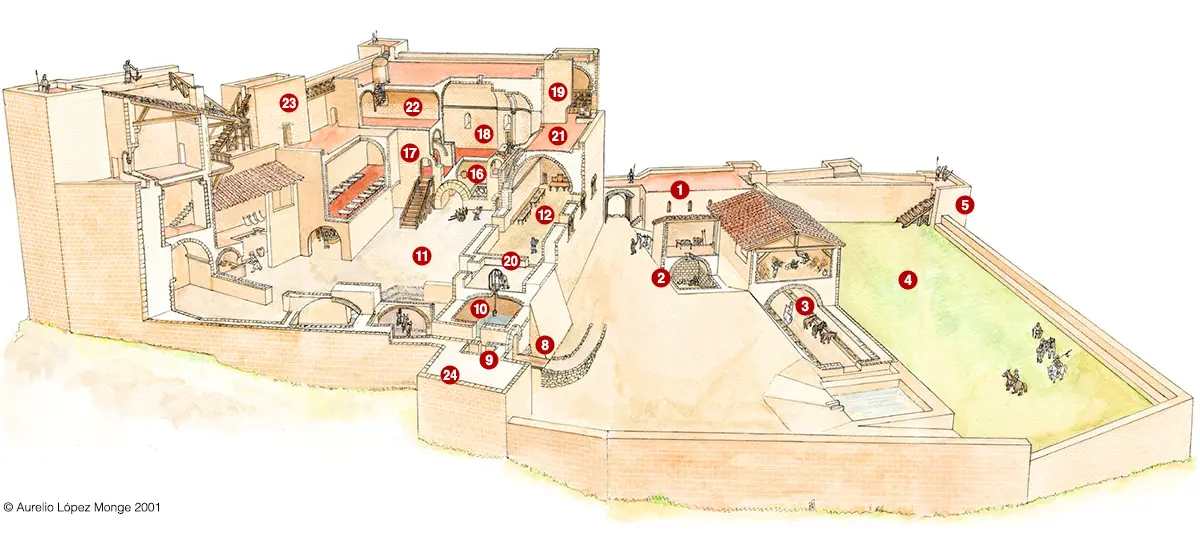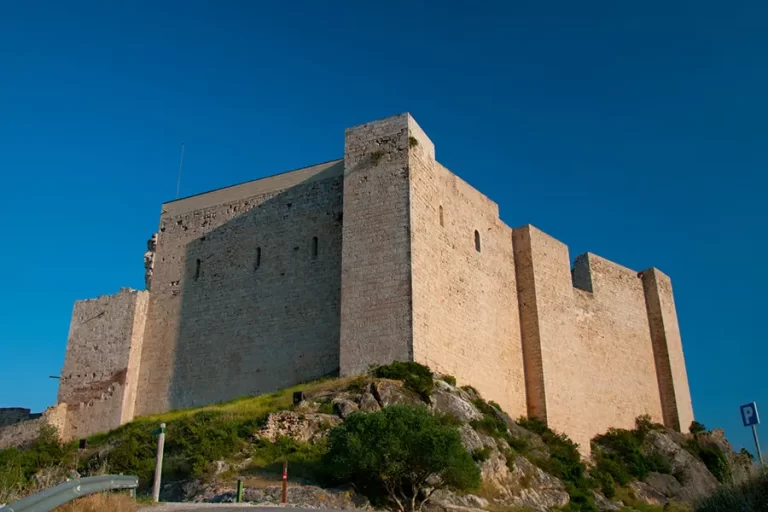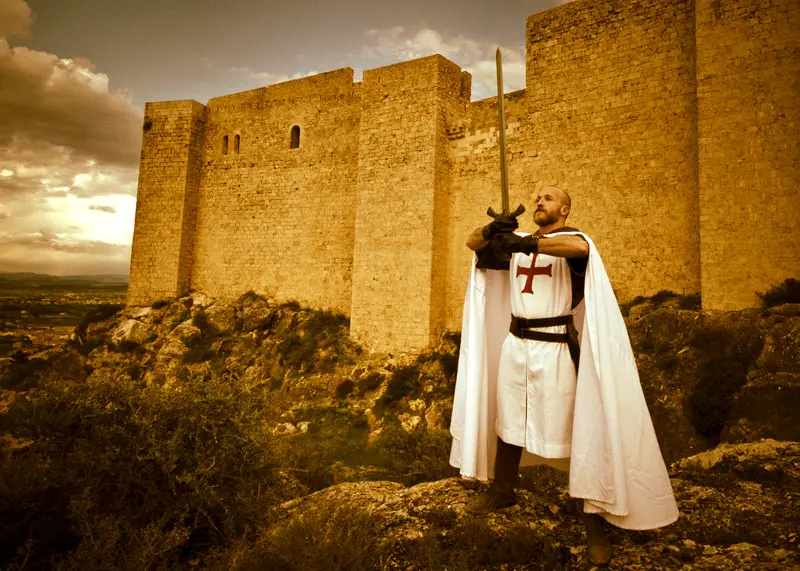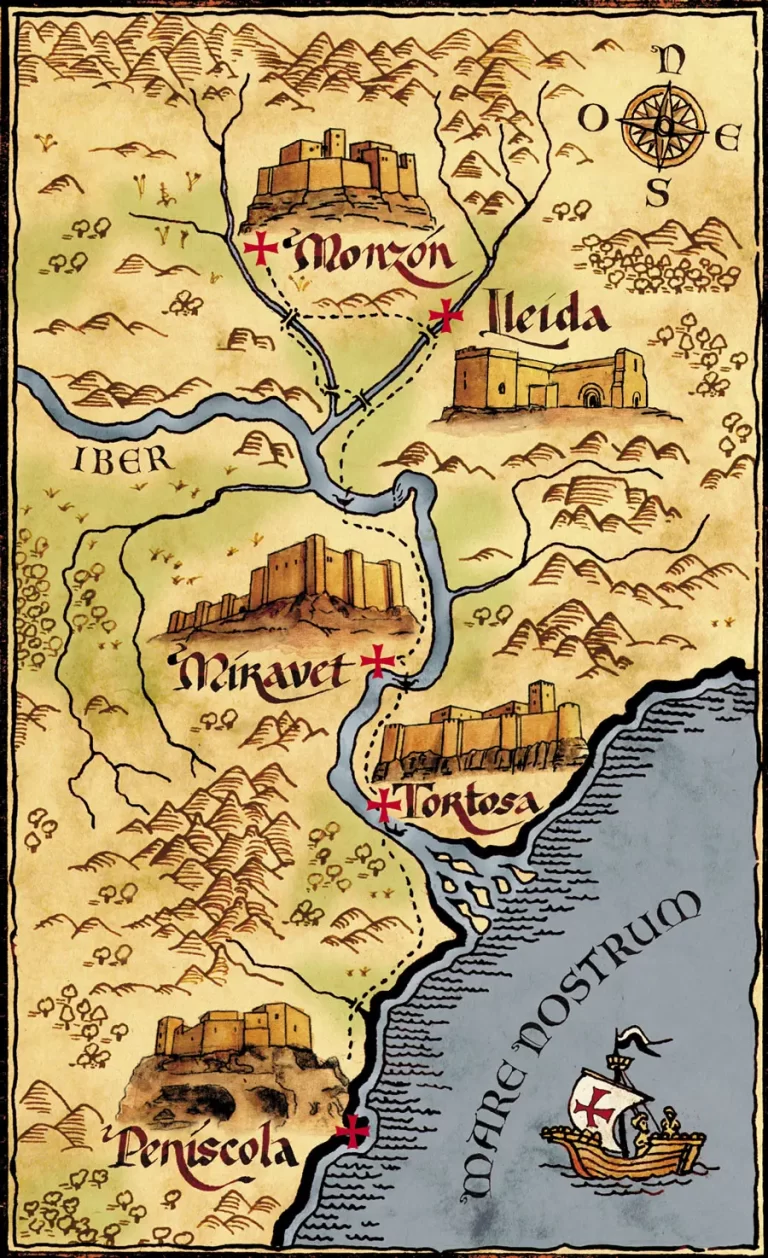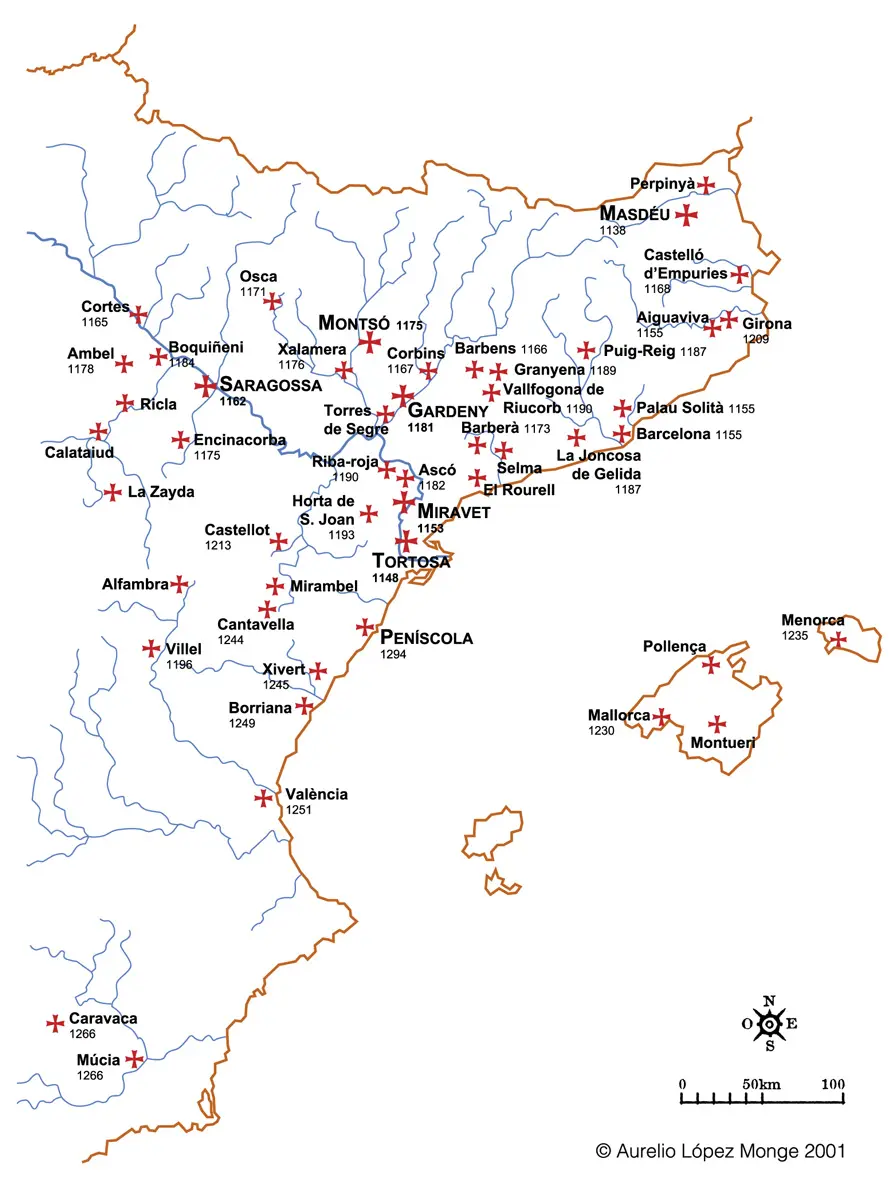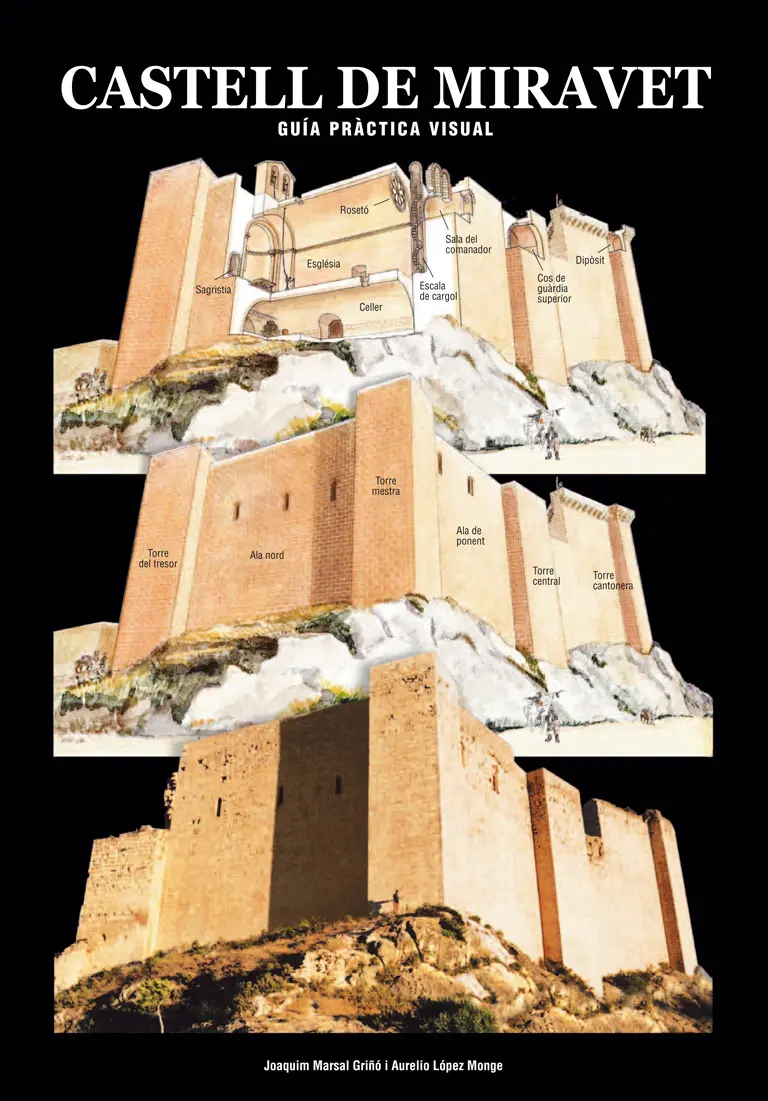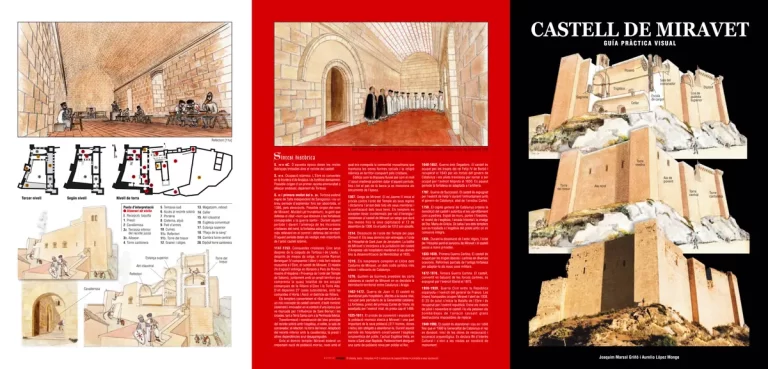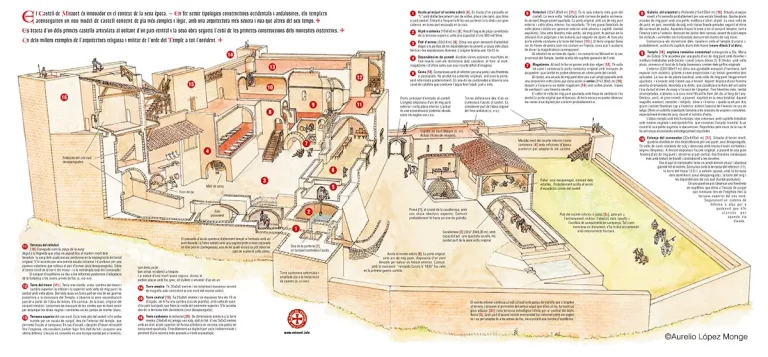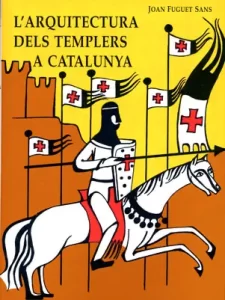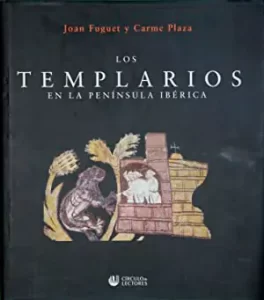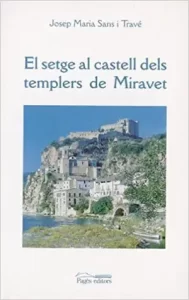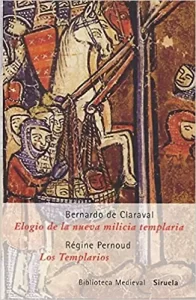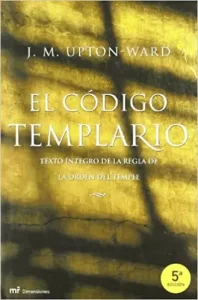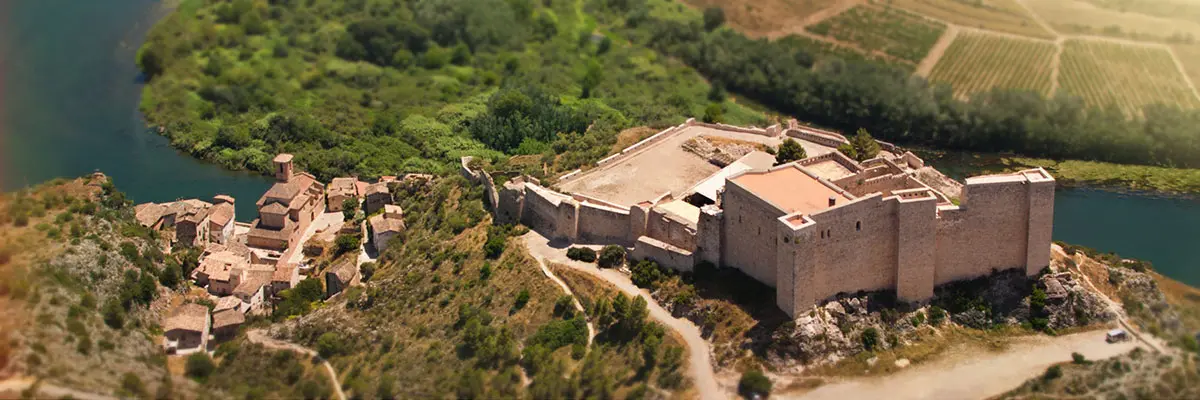
Miravet Castle
Historical town of Cap de la Vila

History of the castle
Medieval fortress,
headquarters of the Templars
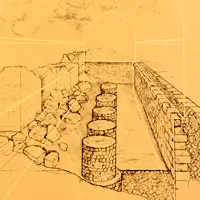
Architecture
Map of the castle and
visit itinerary
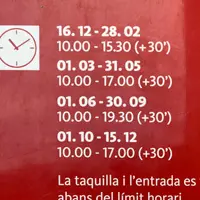
Opening hours and visits
Guided tours and
tickets
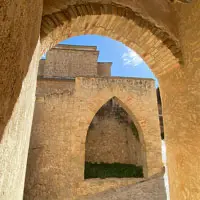
The historical town
"El Cap de la Vila",
Historical center
It is worth going up to the castle on foot from the banks of the river discovering the corners of the historic town
and the panoramic views that open up in its path.
© Air Masdeu Drones
Once upon a time
A magestuous and imposing castle
who lorded over the Ebro…
History of the castle
Miravet Castle stands imposing on a hill overlooking the southern valley of the Ribera d’Ebre. This strategic place was occupied since prehistoric times and has given the castle an outstanding historical prominence.
The origins of the current castle date back to the twelfth century, when Count Ramon Berenguer IV conquered, in 1153, the ribat to the Almoravids, the last Muslim stronghold throughout the Ebro, and donated it to the Order of the Temple.
On the remains of the old Andalusian fortress, the Templars built a new Romanesque castle in Miravet following the tendencies of the Cirtercian monasteries of southern France. It is the first castle-convent of its kind in the whole peninsula, and inspired the most important military works of the Holy Land.
The abolition of the Order of the Templar, at the beginning of the fourteenth century, put an end to this stage of splendor and the castle passed into the hands of the Order of the Hospital of St. John of Jerusalem, until 1835. Later, the castle was remodeled, but maintained the structure that has made it one of the most notable examples of Templar military architecture in Europe.
The origins of the current castle date back to the twelfth century, when Count Ramon Berenguer IV conquered, in 1153, the ribat to the Almoravids, the last Muslim stronghold throughout the Ebro, and donated it to the Order of the Temple.
On the remains of the old Andalusian fortress, the Templars built a new Romanesque castle in Miravet following the tendencies of the Cirtercian monasteries of southern France. It is the first castle-convent of its kind in the whole peninsula, and inspired the most important military works of the Holy Land.

The Templars turned it into the center of the Miravet order and headquarters of the Order in Catalonia and Aragon. The abolition of the Order of the Templar, at the beginning of the fourteenth century, put an end to this stage of splendor and the castle passed into the hands of the Order of the Hospital of St. John of Jerusalem, until 1835. Later, the castle was remodeled, but maintained the structure that has made it one of the most notable examples of Templar military architecture in Europe.
Come and discover his history and legends with our
“In this sacred placewe will build a castle, with the measurements entrusted to us from above, where we will guard the Primordial Stone of the Castle of God on Earth and from where we will enlarge the Kingdom to come…”
–Pere de Robira–
Commander of Miravet
1153 BC
Religious and military architecture
Miravet Castle, together with Loarre, are the most important Romanesque castles on the Iberian Peninsula; the first in the classical Cistercian style and the second in the Lombard style.
- Locker, reception and toilets
- Jail
- Stables
- Training yard and cemetery
- East Tower, Canyoner
- Albacar and gunpowder factory
- Plaza de las Catapultes
- Entrance, moat and slope
- Guard Corps
- Cistern (water cistern)
- Parade ground (sovereign enclosure)
- Refector, chapter house
- Treasure Tower, archive
- Silos
- Pantry, warehouse
- Cellar
- Profundis (cloister)
- Temple (convent church)
- Treasury Chamber
- Kitchen (above the cistern)
- Terrace "Plaça de la sang"
- Commander's Chamber
- Center tower, guardhouse
- Corner tower
Visual guide of Miravet Castle
The sober and well-proportioned interior temple stands out, as well as the refectory along with other rooms such as the cellar, the cistern or the stables. Also the three towers on the west face, representing the Father, Son and Holy Spirit.
It is one of the first castles articulated around a central courtyard with the layout of a Cistercian monastery.
Using Western and Eastern construction typologies, master builders and canters achieved a new model of castle-convent, adapted to the rule of the Temple and the religious and military function.
Its architecture was innovative in the context of the period (1153), being more severe, large and costly than others of its time. Opus quadratum uses isodomic ashlars of hard limestone of great volume, which took more time and labor, with refined finishes such as lime joints decorated with black and red lines.
The sandstone vaults incorporate the ogiva, and the doors and windows incorporate the exterior semicircular arch and interior flat vault, alternating with those of round point in the cloister, the temple and the Commander’s chamber.
The glyptographic marks of the master singers take us to the Cistercian monasteries of Le Thoronet, Silvacane, Sylvanès and Sénanque, and evolve in Santes Creus, Vallbona and Poblet.
The castle occupies an area of 12,500 square meters on a cliff that dominates the most important trade route of the northern peninsula. Its rooms could accommodate a team of 100 men, including knights, sargents, squires, servants and servants.
Live a trip to the past
A medieval adventure of real knights
and authentic games of thrones…
Timetables
16. 12 - 28. 02
10:00 - 15:30 (+30')
01. 03 - 13. 05
10:00 - 17:00 (+30')
01. 06 - 30. 09
10:00 - 19:30 (+30')
01. 10 - 15. 12
10:00 - 17:00 (+30')
The ticket office and entrance close 30 minutes before the time limit.
Closed
Mondays except public holidays
25 and 26 December
1 and 6 January
977 407 368
Guided tours
The Miravet Experience guided tour will take you to discover history and interpret heritage with passion and years of experience.
A private and personalized visit to the castle and the historical complex of Cap de la Vila, including the Old Church and the Palau del Comanador with a wine tasting at the Joaquim Mir art center.
- Group visits can be arranged, didactic and dramatized.
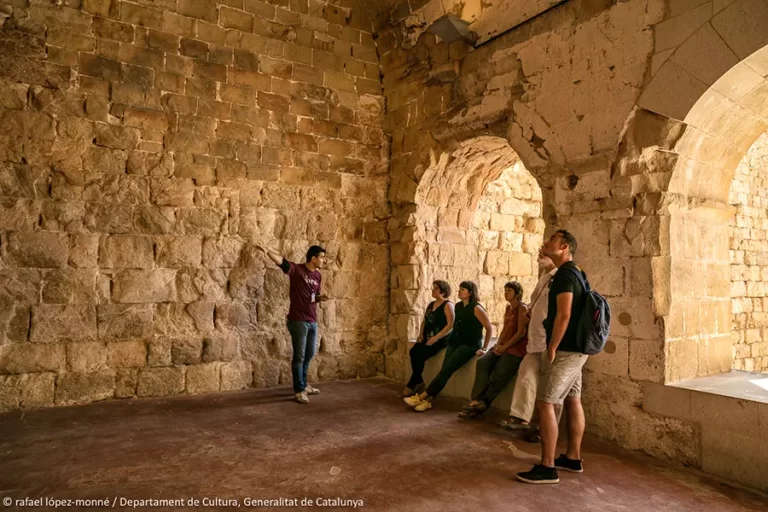

691 561 868
Vicens Ayan (official guide)
The Order of the Temple
The Military Religious Order of the Temple was founded in Jerusalem in 1120 and took as its headquarters a building located on the site formerly occupied by Solomon’s temple: hence its name. His mission was to protect pilgrims and, above all, from his military profession, to lead the anarchic Crusaders.
In 1129 he was recognized at the Council of Troyes, in which his main supporter was the influential Saint Bernard of Clairvaux. Innocent II granted him the most important bulls and privileges and, in 1147, Eugene III granted him the distinctive habit with the white cloak and red cross.
From the beginning, he was very well received in the West, where he installed numerous orders to manage the enormous profits received. Until its dissolution in 1314 by Clement V, the Temple created a structure of some 870 castles, preceptories and subsidiary houses, examples of which can still be found in almost every country of the Christian West and much of the Near East.
The Temple to the Crown of Aragon was established around 1130. The order received from all estates and everywhere benefits and privileges of all kinds. To exploit them, he organized the territory into orders of three types: rural, urban and military. The latter, for obvious reasons, only existed in the Holy Land and the Iberian Peninsula.
The generous attitude of our sovereigns and, above all, the political skill of Ramon Berenguer IV, led to the Templar link to the Christian conquest. With these, the great campaigns of the Ebro, the Cinca, the Segre, Mallorca and Valencia were carried out. The Temple received large tracts of territory, which it defended, colonized and administered from strategic fortresses, which were the headquarters of military orders.
When in 1307 the Pope ordered the arrest of the Templars, these fortresses put up tenacious resistance, especially Miravet, Castellot and Montsó, which were taken after a long siege.
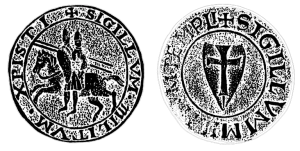
Domus Templi
The route of the ‘Domus Templi‘ Temple (the domains of the Temple) wants to offer visitors the possibility of knowing in situ the work and history of the Temple in the Crown of Aragon.
It is a unique architectural heritage of great historical interest, until now very little known.
The route basically runs through the border territories of the former Christian and Muslim kingdoms of the Cinca and Segre basins and most of the last stretch of the Ebro basin, including Maestrazgo and the north of the current province of Castellón. In these territories the Templars had large domains, which they organized into large orders, such as those of Montsó, Gardeny, Miravet, Tortosa and Peñíscola.
Command castles, towers, country houses, churches, urban complexes built in its domains, which have largely survived to this day, are present along the entire route and are the best testimony of the mark left by the Temple on the ancient kingdoms of the Crown of Aragon.
Visual guide to the castle
The practical visual guide to Miravet Castle is an edition in triptych A4 format that offers a detailed vision of what the Templar castle was like in the XII-XIII century.
A work carried out by Aureli López Monge and Joaquim Marsal Griñó, in 2001, for sale in the same castle.
The fold-out guide has perspective illustrations and sections to visualize the different interior rooms of the castle, as well as a hypothetical recreation of those that have not survived today, but that are mentioned in different documents of the time or later.
It accompanies a summary of the historical chronology and descriptive texts of each of the highlights of the castle.
Recommended books
For its seriousness we recommend the following books about the Knights Templar:
